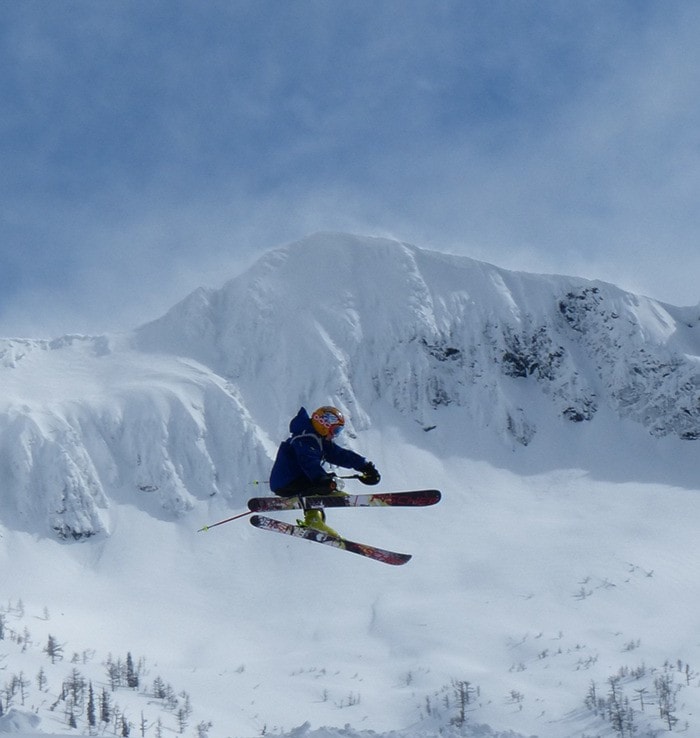Hi skiers!
In the last column we focused on edging more at the top of the turn, and this week we will work on how to take air. We all love that feeling of flying through the air, the freedom of floating above it all, and the precision of the perfect landing. Some of us like just a little air, and others, well you’ve seen the ski movies.
Now, before we huck our meat off of "The Dragon" we need to make sure that it is safe so that we don’t frighten the kids on the chair by wrapping ourselves around a tree.
First step is to assess the jump and make sure that it has the right kind of shape. A steep take off will pop you up and send you a shorter distance while a wedge shape lip will send you farther. Now assess the landing. Those big backcountry booters that you see your ski heroes hit in the movies are built around a perfect landing, not because there was a perfect natural booter to a flat landing. The landing needs to have some slope to help you absorb the impact, and it should be fairly smooth and clear of any obstacles with a good run out.
When you are ready to boost your beef make sure that you can see the landing that you have previously scoped or have a trusted buddy park themselves in a spot where they can give you the ‘all clear’. Remember that it is best to ‘go big on small and small on big’ when trying something new. It is a good idea to say “dropping” when you start the run in so that the little punk with his pants half down doesn’t poach your glory moment. Suck up the bumps on the run in so that you are balanced and relaxed with your hips over your feet and time your pop as you leave the lip. If you do not pop or spring on takeoff you will be sent off balance! If you are afraid to pop then choose a smaller jump and go slower so that you feel confident really pushing off and you will totally take control of your air time. This goes for the inexperienced and for the free riders that are trying a totally new trick. Once in the air pull your knees up towards your chest and keep your hands forward and spot your landing. In this position you can correct any balance issues and can throw in a grab or other trick with steaze – wicked ski style! When approaching your landing extend your legs and spread your arms for balance and stomp it. It is good to have your poles ready in case you need to use them for a four point landing which is the use of a double pole plant for balance. Now you can safely control your speed on the run out and do some fist pumping to show the kids that you totally own the Little Mucker Jump run.
Another skill that you can work on is the Ollie. This is a skate board skill that uses your ski to add pop as you take off. Start on an easy roll and push your hips back so that your weight is on the back of your skis and your tips come off the snow and then throw your weight forward and up and into the air you go! Now, try all of the above skills switch (backwards) and you will really impress the new school gromits.
Now that you are killing it with big air, you can take the same skills to the cliffs and bumps and
groomed rollers! All the same skills and safety applies.
Alpine ski racers generally try to keep their skis on the snow and air time to a minimum as it is faster. However, in the speed events air is inevitable and the World Cup athletes fly over 200 feet at 70 miles per hour so you can bet that they look for big air in their free skiing!
I chose this photo of Yael Oosthhuizen, one of our U12 athletes on the Whitewater Ski Team going big with Ymir peak in the background showing that our ski team spends a lot of our time in the air.
Remember to wear a helmet, set realistic goals, and adjust to the changing conditions out there!
See you on the slopes.
Check us out on Facebook! Whitewater Ski Team.
Visit our website at whitewaterskiteam.ca
— Dylan Henderson is the head coach for the Whitewater ski team. He is a certified Development Level coach with the Canadian Ski Coaches Federation and a Level 1 ski instructor with the Canadian Ski Instructors Association.
